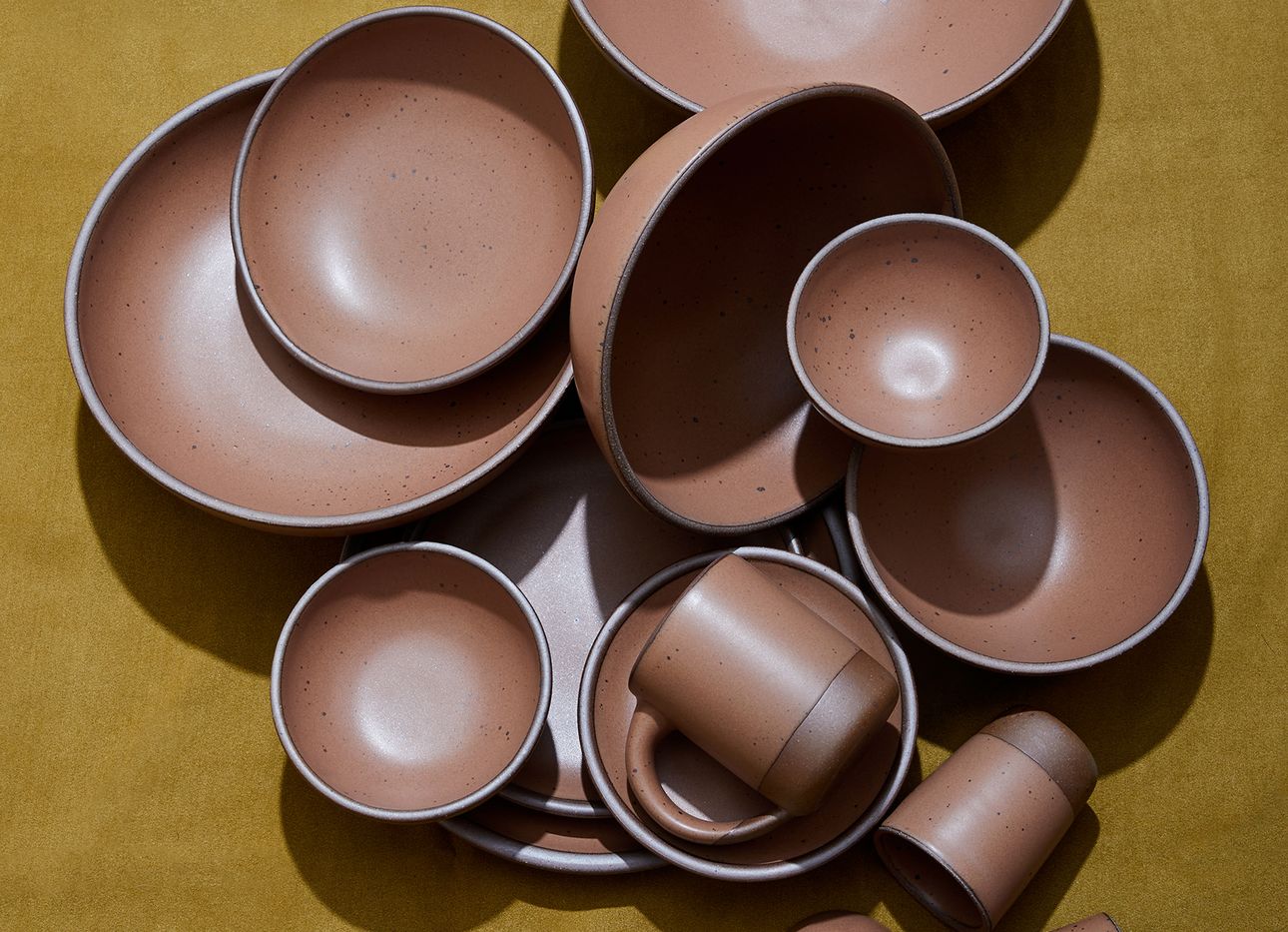
How East Fork Is Using Its Coveted Pottery to Promote Equality
East Fork imbues traditional clay tableware with a sense of delight, resulting in pieces that are instantly recognizable. The company’s ceramics feature its signature raw clay rims and matte glazes that allow for playful color combinations, while nodding to the heritage and legacy of the craft industry in Asheville, North Carolina, where it’s based. Since Alex and Connie Matisse founded East Fork with their friend John Vigelandin, back in 2009, its mugs and bowls have become highly coveted mainstays—as is evidenced by the 42 tons of clay it goes through each month (yes, month)—while its expansion into the lifestyle realm, with online recipes and carefully culled pantry items, such as black garlic shoyu from Japan’s Kyoto prefecture, give the brand a contemporary edge. We recently spoke with Connie about East Fork’s strategy for keeping up with demand, and how its most radical work takes place outside of the limelight.
Your products often immediately sell out. A few months ago, an article in the New York Post called your passionate fans the “new potheads.” What makes East Fork’s pieces so covetable?
I think it’s a combination of people feeling really invested in the company and word of mouth. But sometimes we’re just, like, “Whoa, y’all. It’s literally a bowl.” [Laughs] It’s sweet and flattering, but sometimes people go really overboard and get so emotionally invested. Once, I had someone tell me that they were late to their father’s funeral because they had to pull over to buy one of our pieces on a launch day.
No!
Yeah. So this year, we’ve moved into a new paradigm. Right now you can go onto our website, buy any color pottery you want, and we’ll make it to order and ship it in four weeks.
Can you talk about how you select and create the glazes?
When we first started out, everything was brown. Back then, one of our apprentices was, I think, a chemistry major in college. They were interested in the [science behind] glazes, and started making colors. From there, I started bringing in paint chips and hex codes, and making mood boards. We got really good at being able to match those colors exactly.
We started doing seasonal colors about five years ago. We’d offer limited runs of things, and they sold really quickly. It became a way to speak to an audience that wasn’t just the pottery crowd, and to try and translate what we make—a very traditional craft in North Carolina—so as to appeal to a more coastal or a younger audience, or people with different tastes. We’re trying to bridge that gap.
One way you’ve done that is through collaborations, such as the recent tableware collection with chef and Salt Fat Acid Heat author Samin Nosrat. How else are you expanding the narrative around your products?
We’re going to do something with [the D.C.-based community food platform] the Pineapple Collaborative, and with [the cookware start-up] Great Jones. At the moment, we’re trying to assemble a coalition of Southern-based brands whose values align with ours. We’ve done some storytelling around challenging the assumptions that people make about the South, and a lot of the talk that’s degrading the activism happening here.
You’re redefining the possibilities of a ceramics brand.
We market ourselves like a direct-to-consumer start-up—but we’re actually a vertically integrated manufacturing company that’s working to provide sustainable middle-class jobs for folks in Asheville. We’re trying to do it in a way that feels like a radical departure from how business is typically done, and from how people who are in manufacturing jobs are typically treated.
Of course, I think the products we make are beautiful. They’re really thoughtfully designed. It’s not that the design is secondary to what we do, but the thing that keeps us going, and has us on this intense growth trajectory, is trying to build out new systems for doing business that put a lot more energy into the health, wellness, and financial security of our most entry-level employees. East Fork’s executive team spends about sixty-five percent of its time thinking about personal issues related to our staff [which includes people who are transitioning out of incarceration], and ensuring that everybody understands their benefits and has access to places to live. That’s our real differentiator.